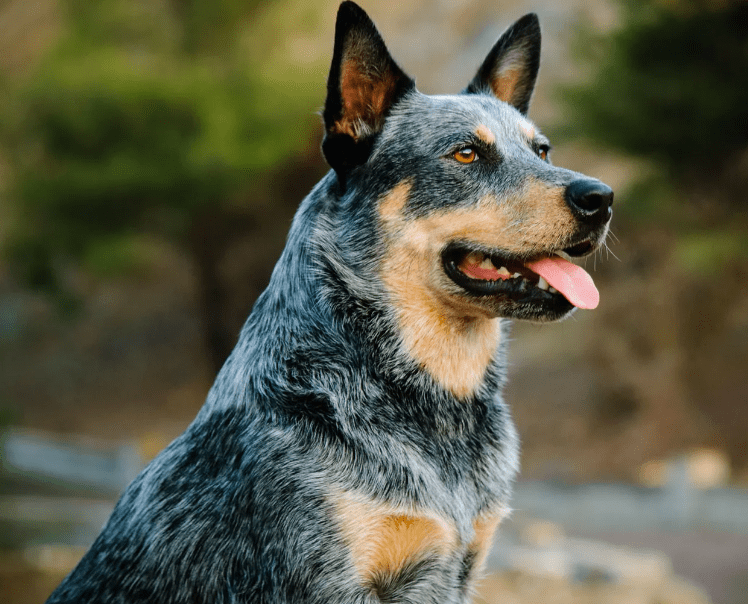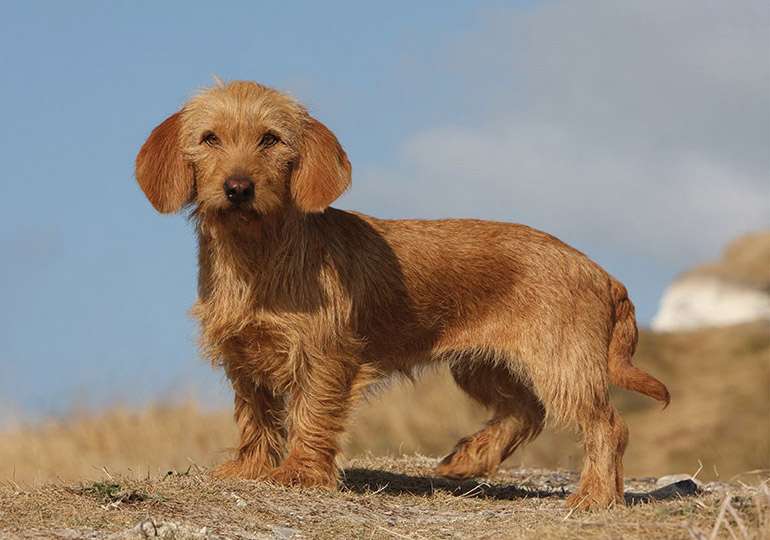
The Australian Cattle Dog, also known as the Queensland Heeler, Blue Heeler, or Red Heeler, is related to Australia’s well-known wild dog, the dingo. These tough herdsmen are cunning enough to frequently outwit their owners. The Australian Cattle Dog is a powerful, agile herder that stands between 17 and 20 inches tall at the shoulder. The ACD has a white coat at birth that either develops blue-gray or turns red with age.
There may be noticeable mottling or speckling patterns in both coat colours. ACDs excel at managing and, of course, moving animals and have a strong work ethic. They are terrific jogging partners because of their endless energy and flexible gait. ACDs are true-blue loyal, famously smart, tenacious, ever alert, and may be wary of strangers. If an ACD isn’t challenged, it easily becomes bored and may get into mischief. It is recommended that ACD owners participate with these versatile dogs in some work, sport, or regular exercise to keep them mentally and physically fit.
The Australian Cattle Dog is a powerful, agile herder that stands between 17 and 20 inches tall at the shoulder. The ACD has a white coat at birth that eventually turns blue-gray or red. Both types of coats have distinguishing mottling or specking patterns.
Care as a Pet/ In Captivity
A blue heeler may become bored and disruptive by chewing on shoes or furniture if it is not given a way to release its energy. This breed adores dwellings with enclosed yards or secure properties where they can run around. Bring a friend along when going for a walk, hike or swim because blue heelers don’t like to be left alone for an extended period of time, especially in confined settings.
Exercise
A blue heeler’s life must include exercise. The breed is driven to get at least 30 minutes of regular physical activity every day because of its hardworking history. Your blue heeler will become exhausted after a walk and numerous fetch games. This breed also requires mental stimulation for at least 30 minutes each day, so keep a variety of puzzles, chews, and tug toys on hand to keep your dog happy. A puzzle that releases treats or a rubber toy that has treats inside, such as peanut butter, might occupy your dog.
Grooming
Blue heelers don’t require a lot of upkeep. To encourage wellbeing, bathe them as needed, cut their nails once a month, wash their teeth, and occasionally clean their ears. This is not a breed that drools excessively or has a strong dog smell.
During periods of the year when they shed a lot, such as in the spring when they lose their winter coat, their two-layered coats do require extra care. It’s crucial to routinely brush your blue heeler during this time, often many times every day, to get rid of dead hair. For the greatest results, use an undercoat rake or comb.

Training
Due to their intelligence and energy, blue heelers are simple to train. Every moving object, including kids and other animals, will be herded. Blue heelers must be socialized and trained from a young age to know what behaviors are acceptable. They could bite at children who are running or play rough with other animals if early training is neglected.
These dogs frequently do exceptionally well in dog sports like agility, fly ball, herding contests, or obedience tests. Additionally, spending time training and socializing with your blue heeler is a terrific method to both challenge their brains and strengthen your relationship with your pet.
Diet and Nutrition
Being such energetic canines, it is crucial to give your blue heeler puppy the right nutrition and to make sure they are getting enough calories to maintain their active lifestyles. For dogs who spend the most of their time as companions, the majority of commercial dog food diets will provide an acceptable mix of nutrients.
For blue heelers who are genuine working dogs or who spend hours sprinting and running, performance diets tailored to their particular demands, as working dogs may be beneficial. In order to make life easier on senior dogs with less teeth, you could find it advantageous to convert to a canned food diet as they age or to soak their kibble before feeding it to them. Look for diets that have glucosamine and chondroitin included because these dogs are so active and we want to support healthy joints, or think about adding on a decent joint supplement.
Table





